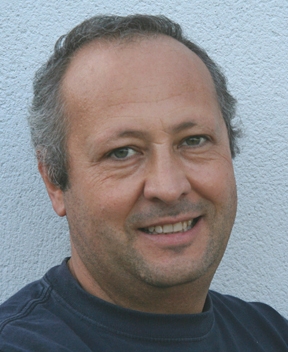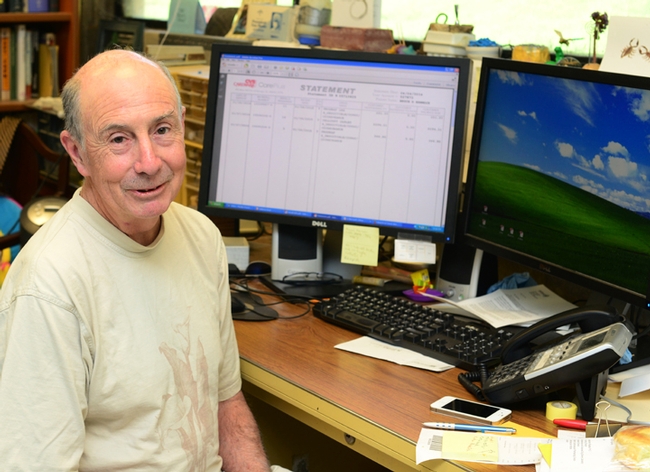

Bruce Hammock a distinguished entomology professor at the University of California, Davis, began his career trying to figure out how to control pests. Now he's making news with his potent enzyme inhibitor that dramatically reduces inflammation, inflammatory pain and neuropathic pain.
He couldn't have been more pleased or proud when a colleague in Spain published ground-breaking research on diabetes using the Hammock-discovered soluble epoxide hydrolase (sEH) inhibitor.
Researchers in the Joan Clària laboratory at the University of Barcelona, Spain, discovered that diabetes can be prevented and reversed, at least in genetically obese mice.
The study, published in the Proceedings of the National Academy of Sciences, revealed that when the sEH inhibitor was used in mice with a high level of omega-3 fats, the treatment both prevented the onset of diabetes and reversed the effects of diabetes in obese mice. Clària is an associate professor at the Barcelona University School of Medicine and a senior consultant at the Biochemistry and Molecular Genetics Service of the Hospital Clínic of Barcelona.
“Our previous studies show the drug we are working on will reduce the symptoms of diabetes in mice by itself,” Hammock said, “but the excitement about Joan Clària's work is that if the mice have a genetically increased level of omega-3 fatty acids--the drug offers prevention or cure in mice.”
This is breaking news that we hope will lead to targeting diabetes in humans. Worldwide, some 347 million people have diabetes, according to the World Health Organization. The Center for Disease Control and Prevention (CDC) estimates that 29.1 million Americans or 9.3 percent of the population have diabetes, either diagnosed or undiagnosed.
Hammock explained that the epoxide metabolites of the omega-3 fatty acid DHA are stabilized by inhibiting sEH, "and these metabolites contribute a great deal to the beneficial effects of an omega-3 diet." Previous UC Davis research in the laboratories of Bruce Hammock, Nipavan Chiamvimonvat, Robert Weiss, Anne Knowlton and Fawaz Haj showed that the enzyme reduces or reverses such diabetes-linked medical issues as renal failure, hypertension, diabetic pain, hardening of the arteries, and heart failure.
In the paper, titled “Inhibition of Soluble Epoxide Hydrolase Modulates Inflammation and Autophagy in Obese Adipose Tissue and Liver: Role for Omega-3 Epoxides,” Clària described the administration of the sEH inhibitor as “a promising strategy to prevent obesity-related co-morbidities.” Technically, the study “demonstrates that stabilization of cytochrome P-450 epoxides derived from omega-3 polyunsaturated fatty acids through inhibition of the inactivating enzyme soluble epoxide hydrolase (sEH) exerts beneficial actions in counteracting metabolic disorders associated with obesity, including insulin resistance and fatty liver disease,” Clària said.
Clària said the study also “sheds more light on the role of sEH in cellular homeostasis by providing evidence that omega-3 epoxides and sEH inhibition regulate autophagy and endoplasmic reticulum stress in insulin-sensitive tissues, especially the liver.”
Cristina López-Vicario was the first-author of the research paper. In addition to Clària and Hammock, other co-authors were José Alcaraz-Quiles, Verónica García-Alonso, Bibiana Rius, Aritz Lopategi, Ester Titos and Vicente Arroyo, all of the Clària lab or associates; and Sung Hee Hwang of the Hammock Lab, UC Davis Department of Entomology and Nematology and the UC Davis Comprehensive Cancer Center
Hammock has worked on the mechanism of hydrolytic enzymes and their effect on human health for more than 35 years. He is developing both enzyme inhibitors and natural products as drugs for use in the United States and developing countries. His work has helped identify new targets for the action of drugs and other compounds to improve health and predict risk from various environmental chemicals.
Hammock is the founder and CEO of EicOsis, and through EicOsis, the compounds are in clinical trials for companion animals and the Pre-Investigational New Drug Application (Pre-IND) Consultation Program for neuropathic pain in human diabetics.
Hammock was recently selected a fellow of the National Academy of Inventors (NAI), which honors academic invention and encourages translations of inventions to benefit society and a member of the National Academy of Sciences. He directs the campuswide Superfund Research Program and National Institutes of Health Biotechnology Training Program.
Attached Images:
